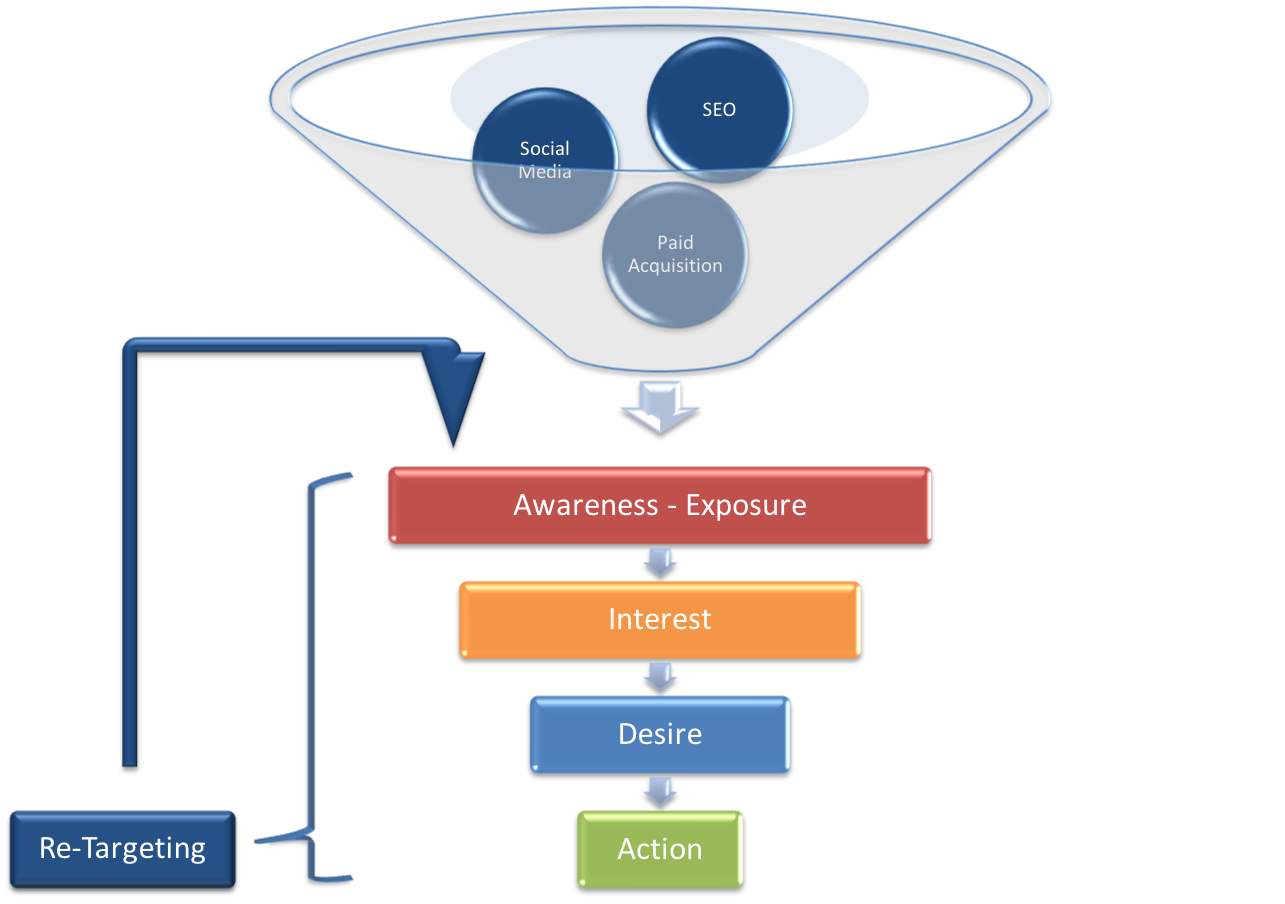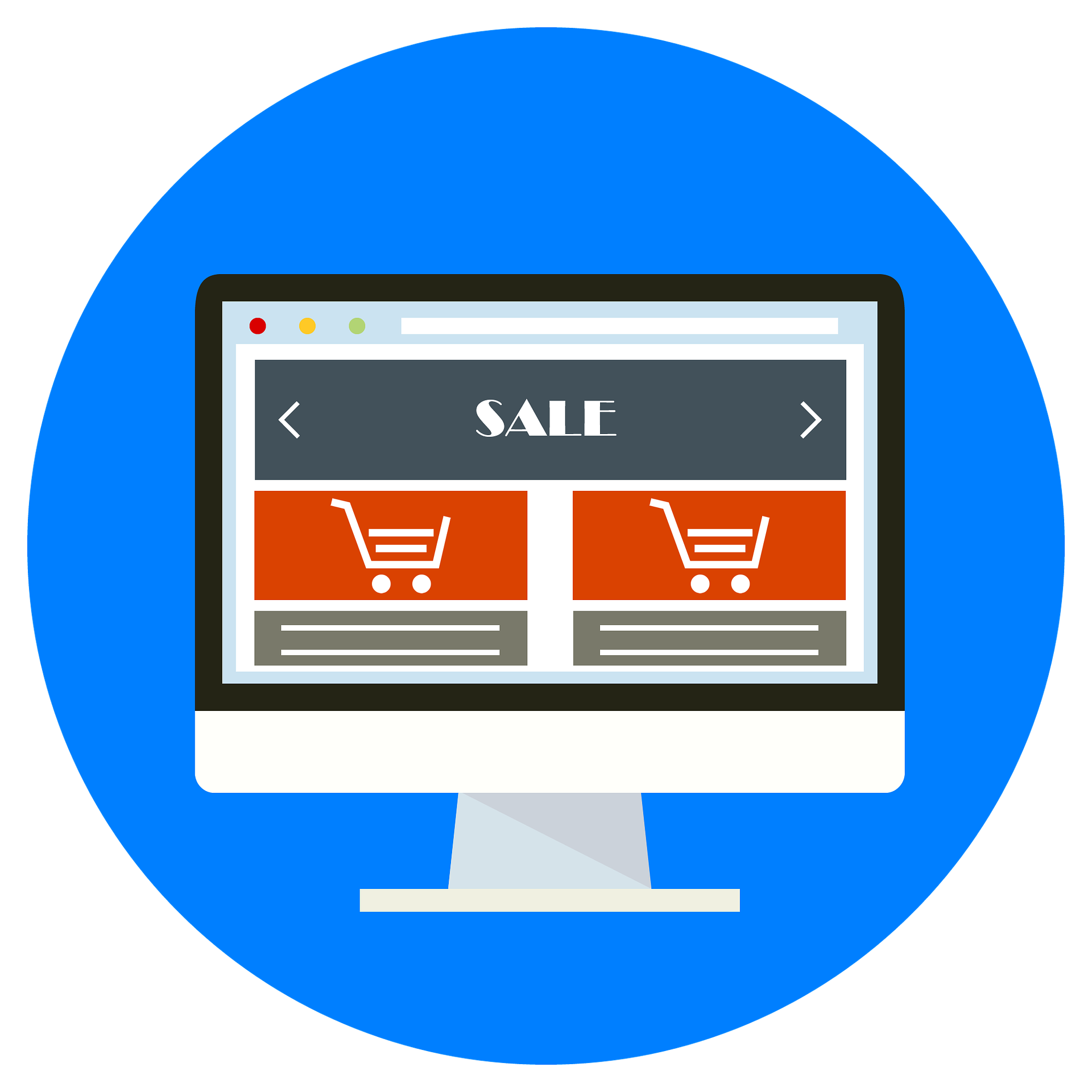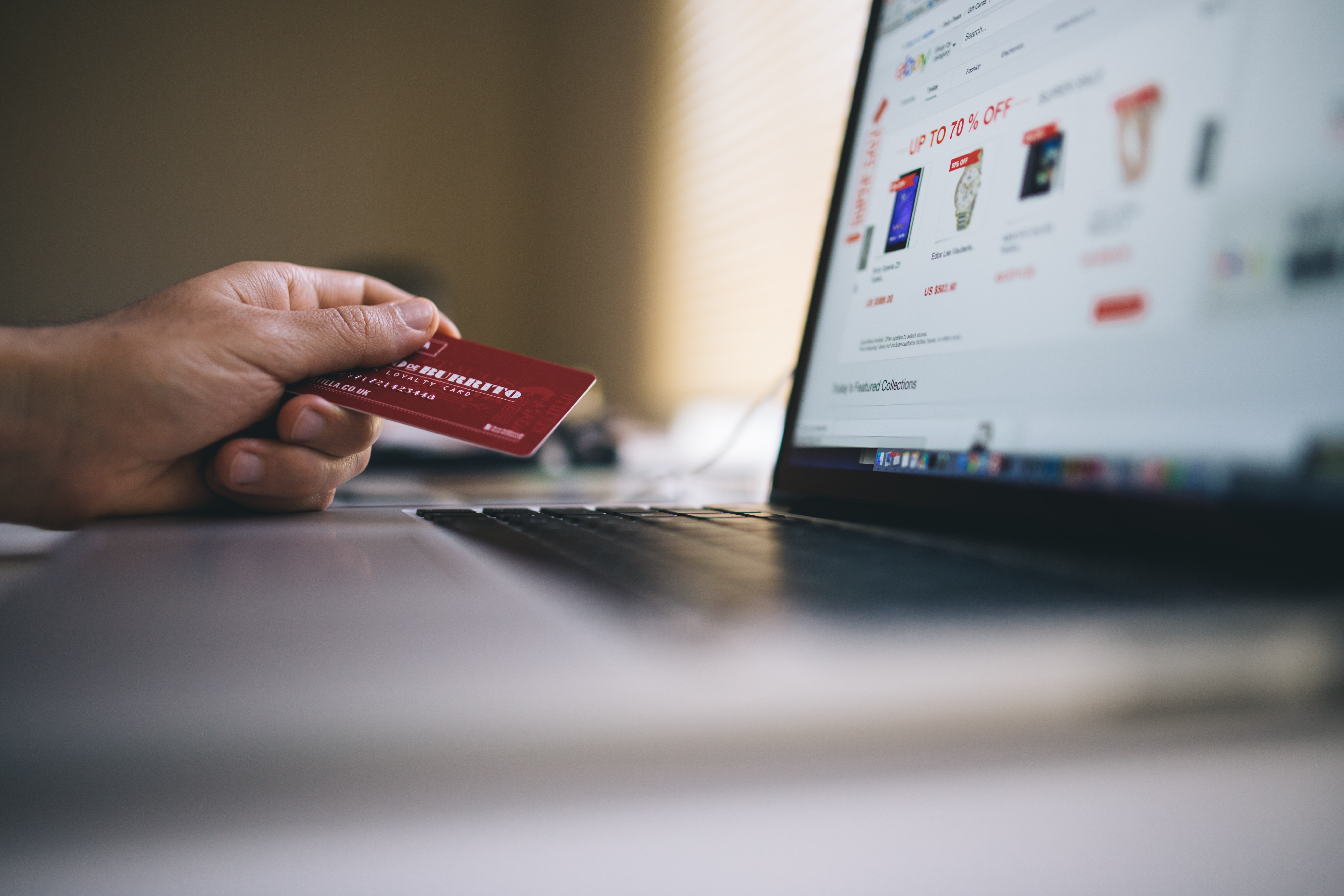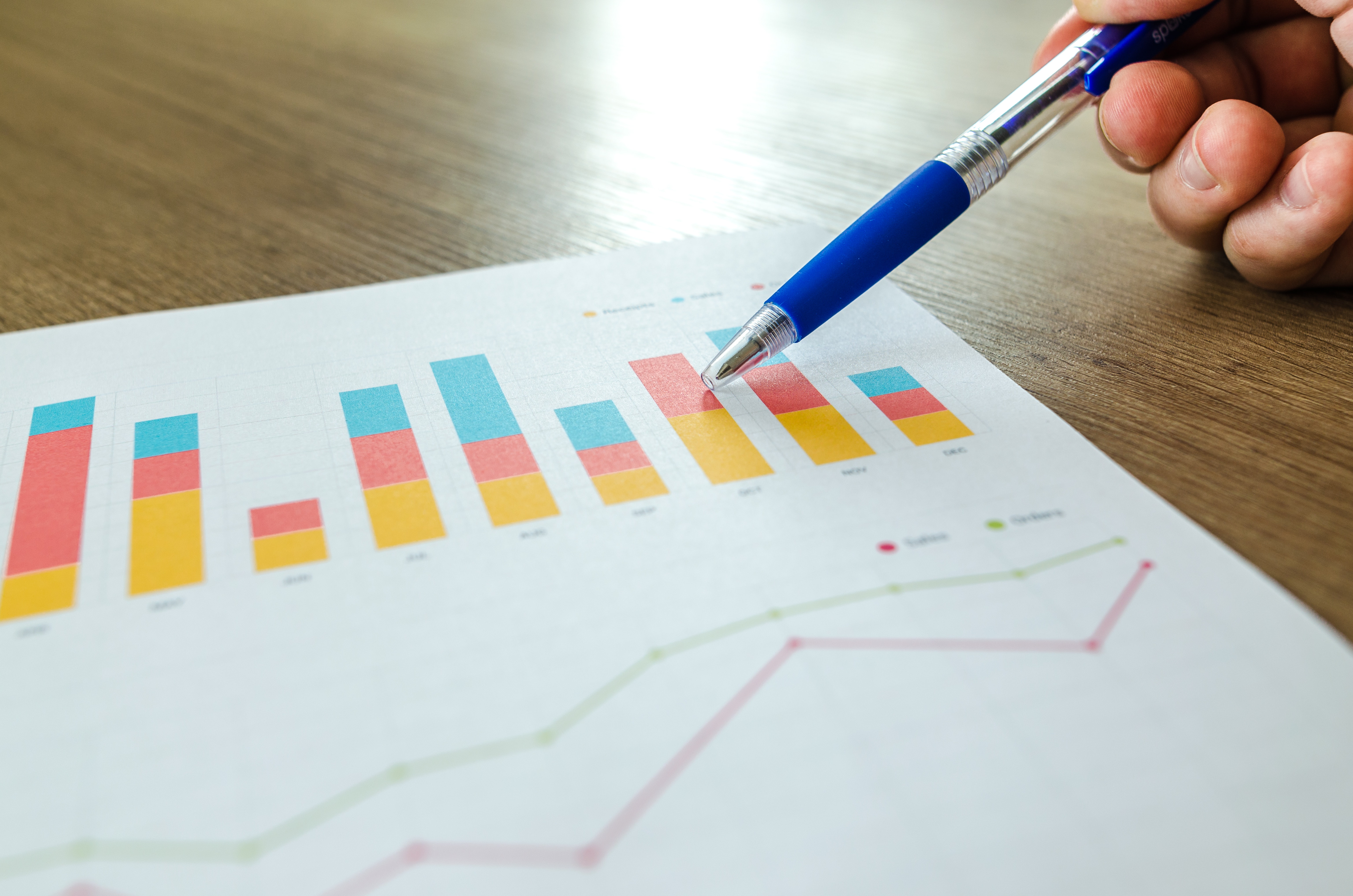Your Key to Selling More - The Conversion Funnel
You run an ecommerce business. You got into it because ecommerce is the now and the future - more and more brick and mortor businsesses are making ecommerce a major part of their strategy - you know that and you're already there.
Every ecommerce business facilitates transactions, wether between two companies (called businesses-to-business or B2B), two consumers (consumer-to-consumer or C2C) or companies with consumers (business-to-consumer or B2C), in all transaction types, there is a “conversion funnel” - the journey a customer or buyer has to go through to make a purchase.

Every customer goes through this conversion funnel, which generally has several stages. Those stages are:
- Awareness or Exposure: Attracting a community or particular audience to become aware of your business or brand.
- Interest: Educate potential consumers and present your products to them.
- Desire: Potential customers will begin to consider purchasing your product.
- Action: Ultimately your visitors convert into customers and will actually make a purchase.
- Retarget and Re-engage: For users that have fallen out of the funnel, pull them back into your funnel and get them to become successful customers or for users that have purchased - recurrent ones.
Althought it's probably something you're nothing thinking about daily (or at alL!) you have conversion funnel already, and it’s something you need to optimize. Creating an optimal conversion funnel is not something that will happen on a day; it will take time and effort to understand it and make the necessary adjustments. The variables and factors are vast when it comes to sales funnels but you’ll start by analyzing and understanding how visitors land on your website and convert.
You will lose potential customers in each stage and the goal is to guide as many visitors to conversion as you can.

Customers need options to feed their interest once they have landed into your website; you must think about what your customers might want, and how you can giveit to them. The more details you provide, the better; this will help your customers avoid confusion and improve their experience throughout your funnel.
Don’t beat yourself up if some visitors didn’t make it to the action stage; most visitors are probably not going to take a desired action, but that doesn't mean you shouldn't focus on those users too. There are lots of tools and tons of data you can use and work with in order to make better decisions and understanding each part of the conversion funnel will help you take good actions, affect positively to you business and increase conversion rate.
Let’s go deeper into the stages of a conversion funnel:
Awareness or exposure: This is the stage where you attract visitors to your website. Do you know where your traffic is currently coming from? Do you use social media, search engine optimization, a blogging, referrals, advertising or other sources of traffic? Have you analyzed the cost of each visitor? How about the cost of each sale? These are a number of ways you can make people aware of your business so they can find your products and services. Google Analytics and other tools are the best way to find information on how these techniques work. Once you get to understand this data you can figure out if you are targeting the right audience for your particular funnel. You wouldn’t want to sell products for cats to people who own dogs.
Interest: In this stage, visitors develop an interest in one of your products or services. The content you display on your website plays the largest role in developing interest. Assuming you’re attracted the right type of visitors, you know have to show them that the product or service you provide is what they’re looking for. Use attractive headlines, banners, visually appealing layouts, and product specific landing pages to segment your traffic based on consumer need.Educating your visitors will help them understand which of your products fit them best.
Desire: Once your visitors get interested in your product and wish to purchase it, they are on the desire stage. Here you need to provide your potential customers the best descriptions of the product in a teasing way; use outstanding pictures that will help them get more excited about purchasing said product; it helps to create a sense that the product will only be available for a short duration or until you ran out of it and soon, it will be unavailable. Including good testimonials and product reviews is a key element that will make your customers confident enough to purchase. Provide the necessary information and details to help your customer purchase your product.
Action – Conversion: In many cases the action step is the end goal. At this stage is where visitors have achieved conversion and taken a desired action on your website; this could range from submitting their information and providing their email address, to making a purchase for your product or service, depending on the particular funnel. At this point is really important to optimize your checkout page to make it simple, easy and instinctive for customers to take your desired action; multiple payment options and offering a money back guarantee help your customers feel safe and to trust your business. Make sure you provide all the information that is relevant for customers when making the desired action and answering the most frequently asked questions along the way. Don’t forget upsells and cross sells; upgrades, add-ons, accessories, all these can be offered during the checkout process or be offered to them later on via re-engagement.

Re-Target – Re-Engage: This is an extra stage that is left out most of the time; but it’s also a really important one when it comes to ecommerce. You’d think once customers have achieved the final stage of conversion and taken your funnel’s desired action, then they are done with you; but actually, you are not done with them. Now that you know these customers were interested enough to make a purchase or submit their email to you, you cannot let them go. Pull your successful customers back in a funnel and try to persuade them to become recurrent customers for your business. Potential recurrent customers might be interested in more of your products and content. Offer new products and upsells to your customers’ original purchases; let them know about upcoming releases. On the other hand, it could be some visitors abandoned your funnel at any of the previous stages; don’t let failed customers go so easily; perhaps, this time you can encourage them to go back into the funnel and luckily, achieve conversion. Try to offer different products, special offers and free trials so they will consider you again. Invite you re-targeted customers to join your social platforms and send newsletters to them to remind them of your products and offers; make them feel wanted and important to your business but try not to be too overwhelming with them. The more you can personalize you messages, the better; this way you are making a real connection with your customers and you are more than just spam.
Each stage is important and you must be aware of their efficiency; an efficient machine needs all its component working properly. If you are losing customers at one particular stage, then you need to focus on that one. There are lots of actions, big and small, you can take to improve your funnel.

Be in touch with your audience, get to know it, remind it you are there; be thankful with your customers, thank them after a purchase and let them know you appreciate them. Be a provider of information, answer their questions; connect at a personal level with them, email them personalized messages and congratulate them on their birthday. Social media and email messaging are powerful weapons you will have to wield in order to achieve success in the electronic commerce.